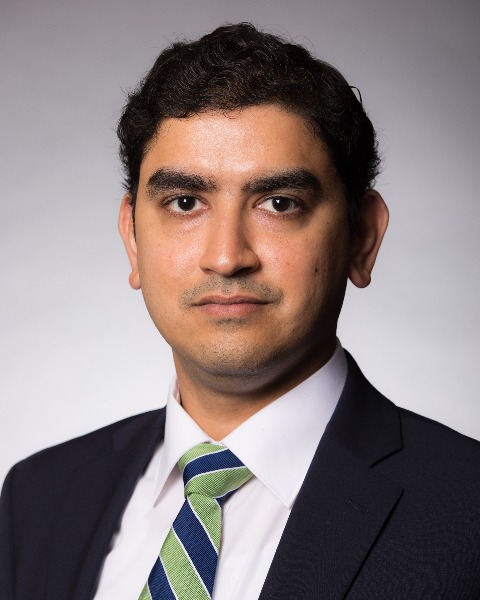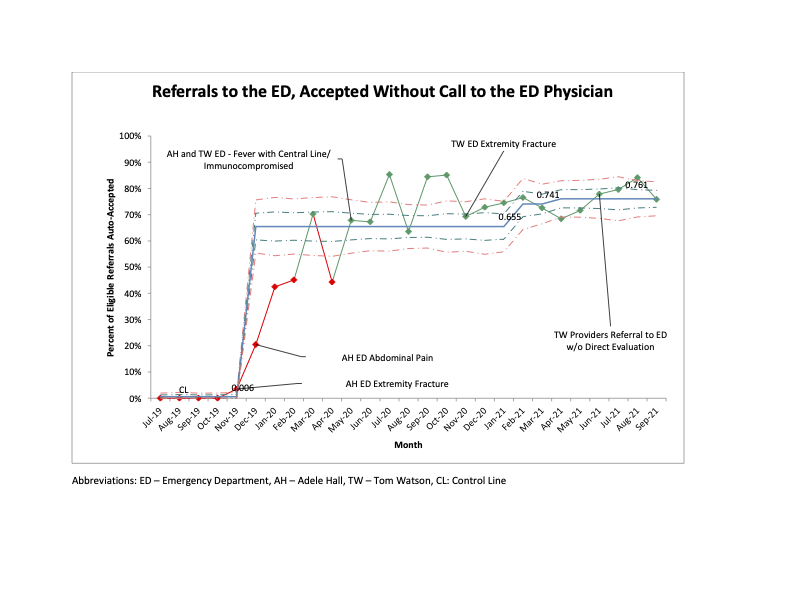Emergency Medicine: Quality Improvement
Category: Abstract Submission
Emergency Medicine XIV
57 - Reducing Avoidable Referral Phone Calls to the ED: A Multidisciplinary QI Approach
Monday, April 25, 2022
3:30 PM - 6:00 PM US MT
Poster Number: 57
Publication Number: 57.407
Publication Number: 57.407
Shobhit Jain, Children's Mercy Hospitals and Clinics, Kansas City, MO, United States; Crystal N. Nading, Children's Mercy Hospitals and Clinics, Grain Valley, MO, United States; Mike A. Weckwerth, Children's Mercy Hospitals and Clinics, Kansas City, KS, United States; Lindsey A. Query, University of Missouri-Kansas City School of Medicine, Kansas City, MO, United States; Dehlia Arnold, Children's Mercy Hospitals and Clinics, Kansas City, MO, United States

Shobhit Jain, MD
Associate Professor of Pediatrics
Children's Mercy Hospitals and Clinics
Kansas City, Missouri, United States
Presenting Author(s)
Background: Emergency Department (ED) physicians receive multiple phone calls for referrals, while also treating patients and educating trainees. Prior studies show that distraction can increase safety risks in the ED. Additionally, the referring provider may have to wait, impacting their efficiency. Our EDs receive over 550 calls/month, and many may not require ED specialist input.
Objective:
Aim: To reduce the calls to ED physicians by 30% in 2 years. Process Measure: Referrals for fractures. Balancing Measure: Suboptimal care from direct feedback and RL reports We implemented 5 algorithms sequentially: extremity fractures, appendicitis, fever/immunocompromised, fever/central line, C-spine injuries. Education and feedback were provided, and PDSA cycles were used.
Design/Methods: We conducted this project at the Children’s Mercy ED – Adele Hall and Tom Watson EDs with > 120,000 visits/year. A multidisciplinary group from the ED and transfer center planned iterative improvements, including algorithms for communication specialists to gather pertinent information and accept the patient to the ED.
Results: We reduced referral calls to the ED physician by 35%. Over 80% of calls for fractures, and 50% of calls for all eligible diagnoses were auto-accepted. There were 2 cases where a referral to the ED may have been avoided. However, there were no cases of potential medical harm to patients.Conclusion(s): Many ED referral calls can be optimally handled by the transfer center, enabling communication specialists to work at the top of their license and mitigating interruptions at the ED. This may be implemented in other clinical areas and improve access to the hospital. We continue to study and implement more algorithms.
Trend of Referrals to the ED, Accepted Without Call to the ED Physician Trend of Referrals to the ED, Accepted Without Call to the ED Physician
Trend of Referrals to the ED, Accepted Without Call to the ED Physician
Objective:
Aim: To reduce the calls to ED physicians by 30% in 2 years. Process Measure: Referrals for fractures. Balancing Measure: Suboptimal care from direct feedback and RL reports We implemented 5 algorithms sequentially: extremity fractures, appendicitis, fever/immunocompromised, fever/central line, C-spine injuries. Education and feedback were provided, and PDSA cycles were used.
Design/Methods: We conducted this project at the Children’s Mercy ED – Adele Hall and Tom Watson EDs with > 120,000 visits/year. A multidisciplinary group from the ED and transfer center planned iterative improvements, including algorithms for communication specialists to gather pertinent information and accept the patient to the ED.
Results: We reduced referral calls to the ED physician by 35%. Over 80% of calls for fractures, and 50% of calls for all eligible diagnoses were auto-accepted. There were 2 cases where a referral to the ED may have been avoided. However, there were no cases of potential medical harm to patients.Conclusion(s): Many ED referral calls can be optimally handled by the transfer center, enabling communication specialists to work at the top of their license and mitigating interruptions at the ED. This may be implemented in other clinical areas and improve access to the hospital. We continue to study and implement more algorithms.
Trend of Referrals to the ED, Accepted Without Call to the ED Physician
 Trend of Referrals to the ED, Accepted Without Call to the ED Physician
Trend of Referrals to the ED, Accepted Without Call to the ED Physician